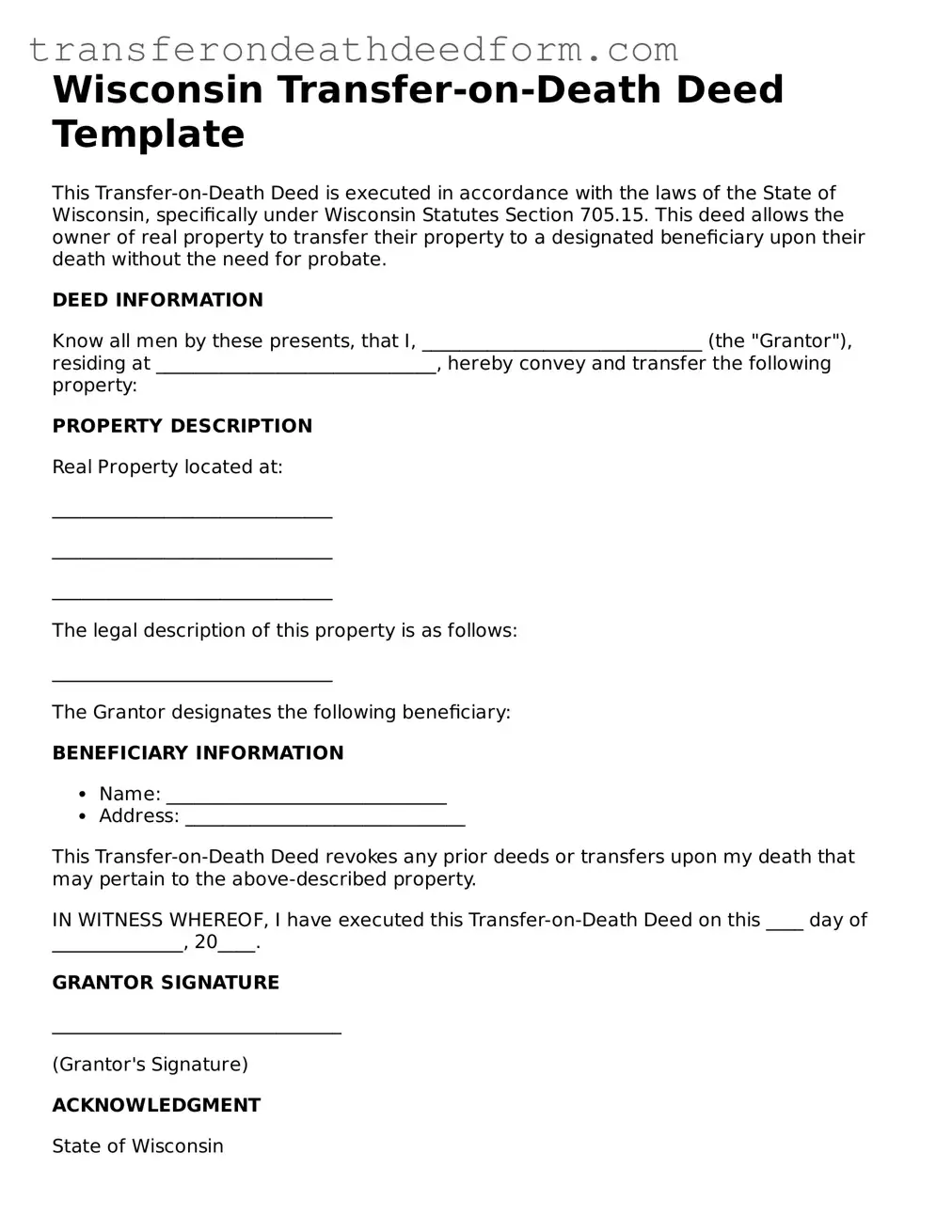Wisconsin Transfer-on-Death Deed Template
This Transfer-on-Death Deed is executed in accordance with the laws of the State of Wisconsin, specifically under Wisconsin Statutes Section 705.15. This deed allows the owner of real property to transfer their property to a designated beneficiary upon their death without the need for probate.
DEED INFORMATION
Know all men by these presents, that I, ______________________________ (the "Grantor"), residing at ______________________________, hereby convey and transfer the following property:
PROPERTY DESCRIPTION
Real Property located at:
______________________________
______________________________
______________________________
The legal description of this property is as follows:
______________________________
The Grantor designates the following beneficiary:
BENEFICIARY INFORMATION
- Name: ______________________________
- Address: ______________________________
This Transfer-on-Death Deed revokes any prior deeds or transfers upon my death that may pertain to the above-described property.
IN WITNESS WHEREOF, I have executed this Transfer-on-Death Deed on this ____ day of ______________, 20____.
GRANTOR SIGNATURE
_______________________________
(Grantor's Signature)
ACKNOWLEDGMENT
State of Wisconsin
County of ____________________
Subscribed and sworn to before me on ____ day of ______________, 20____ by ______________________________.
_______________________________
(Notary Public Signature)
My Commission Expires: ______________________________
This Transfer-on-Death Deed is effective upon the death of the Grantor and shall be recorded in the office of the Register of Deeds for the county where the property is located.
